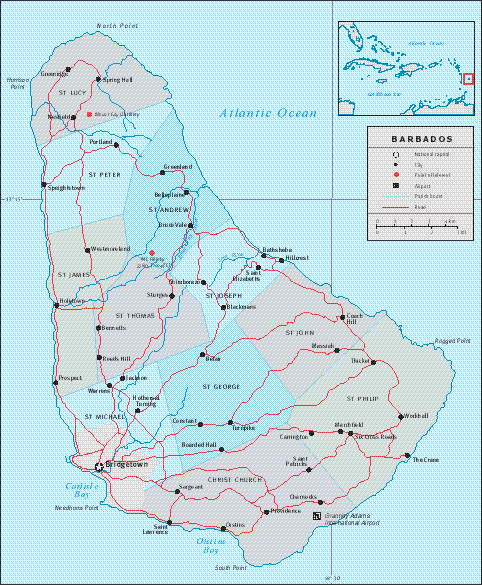
Barbados has been described as the Caribbean's most "British" island. Blacks in Barbados speak with a British accent, play the traditionally British sport of cricket, and adhere to British custom in their legal and political affairs. Great Britain has indeed been an important force in the nation's development. But standard accounts of the history of Barbados have often focused on its British character at the expense of its African heritage. Some historians have emphasized the British role in creating the institutions that govern Barbados today. Similarly, its educational system, sports industry, and economy have all been tied to Great Britain. However, British culture has not necessarily played the most important role in the historical emergence of Barbados as a free and democratic society.
Many historians now acknowledge that slavery was perhaps the defining institution in Barbados and that African slaves are essential players in the island's history. In fact, the African roots of contemporary Barbadian society are evident in its music, literature, and poetry. On an equally compelling note, the history of this island country offers a fitting introduction to the rise and fall of European colonialism. Slavery and the sugar plantation were first perfected in the seventeenth century by British planters in Barbados.
The economic role that Barbados played in the development of European capitalism is vital to an understanding of both the history of slavery and its demise in the Western world. Barbados was a colony founded entirely on slave labor. As early as the seventeenth century black slaves outnumbered whites by nearly four to one, culminating in the creation of legal and political institutions that dominated and subjugated the island's black majority for more than 300 years. The authoritarian style with which the white minority ruled Barbados was admired and emulated by white colonists throughout the Caribbean (see Colonial Rule). By the mid-seventeenth century Barbados was the prototype for European colonialism, and the demise of that system on the island bears vivid testimony to the ability of African slaves to overcome enormous obstacles on the road to freedom (see Abolition and Emancipation in Latin America and the Caribbean).
Amerindian PresenceThe earliest inhabitants on Barbados were Native American nomads whom most historians refer to as Amerindians. The island was a temporary stopping ground for three successive waves of Amerindian migrants moving north toward North America. The first wave, a group known as the Saladoid-Barrancoid, migrated by canoe from South America around 350 c.e. They were farmers, fishermen, and ceramists. Many of their customs and languages resembled those of the Arawak, who were among the largest indigenous groups in the Caribbean in the first century c.e. The Arawak, also known as the Lokono, constituted the second wave of Amerindian migrants, arriving in Barbados from South America around 800 c.e. Some of the more famous extant Arawak settlements include Stroud Point, Chandler Bay, Saint Luke's Gully, and Mapp's Cave. The Arawak lived relatively isolated from other Amerindian groups until the thirteenth century, when the Carib arrived from South America, representing the third wave. Within a few years the Carib had displaced both the Arawak and the Salodoid-Barrancoid populations. For centuries the Carib lived in isolation on the island. However, that peaceful existence was disrupted in the first decade of the sixteenth century when Spanish conquistadors began enslaving Amerindians throughout the Caribbean, forcing them to work as slaves on plantations throughout the region. The Carib on Barbados were among those seized by Spanish conquistadors. Scholars believe that those Carib who managed to avoid enslavement did so by emigrating to nearby islands. Both of these forces - the enslavement and subsequent emigration - left the island uninhabited by the time the first British ship arrived in 1625.